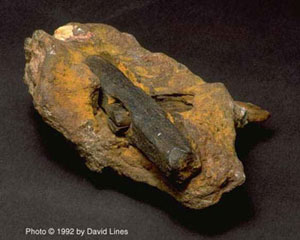|
The Artifact Evidence OOPARTS |
|
|
Article from the Creation Evidence Museum
The London Artifact was found near London, Texas in
Kimball County.
The site is part of a large geographical zone called the
Edwards Plateau.
It primarily consists of Cretaceous rock. In June
of 1934, Max Hahn
discovered a rock, sitting loose on a rock ledge beside
a waterfall outside
London, Texas. Noticing that this weathered rock
had wood protruding
from it, he and family members cracked it open with a
hammer and chisel,
exposing the hammerhead to the light of day for the
first time since the
stone formed around it. To verify that the hammer was made of metal, they cut into one of the beveled sides with a file. In the resulting nick, bright, shiny iron was exposed. The bright metal in the nick is still there, with no detectable corrosion. The metal hammerhead is approximately six inches (15.24cm) long with a nominal diameter of one inch. This seems somewhat small for a gross pounding instrument, suggesting that this tool was meant for fine work or soft metal. |
|
The London Hammer: An Alleged Out-of-Place Artifact Fig. 1. Hammer showing separated chunk of matrix containing what appears to be a modern clam shell. Abstract An iron and wooden hammer, sometimes
called the "London Artifact" or "London Hammer," found by local hikers
in a creek bed near London, Texas in 1936, has been promoted by Carl
Baugh and other strict creationists as an out-of place artifact. They
maintain that the hammer, which was partially embedded in a small, limy
rock concretion, originated in a Cretaceous rock formation (or an
Ordovician or Silurian one, depending on the account), thus
contradicting the standard geologic timetable. However, the hammer was
not documented in situ, and has not been reliably associated with any
specific host formation. Other relatively recent implements have been
found encased in by similar nodules, and can form within centuries or
even decades under proper conditions (Stromberg, 2004). The hammer in
question was probably dropped or discarded by a local miner or craftsman
within the last few hundred years, after which dissolved limy sediment
hardened into a nodule around it. Although a brief rebuttal to Baugh's
hammer claims was made by Cole (1985), Baugh and a few other
creationists continue to promote it. This review provides further
analysis of the hammer and creationist claims about it.
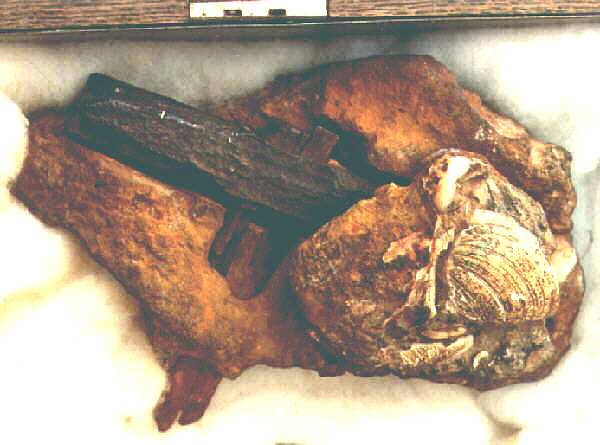 Fig. 2. Hammer with broken section of concretion repositioned. Background
Mr. and Mrs. Max Hahn were hiking
along the Red Creek near the small town of London, Texas, in June 1936
(or 1934, according to others), when they happened upon a small rock
nodule with a piece of wood protruding from it. According to Helfinstine
and Roth (1994), Max Hahn's son George broke open the rock nodule in
1946 or 1947, revealing the rest of the hammer, including a metal hammer
head. It is important to note that even some creationist accounts
(Baugh 1997, Mackay, 1985) acknowledge that the hammer bearing nodule
was not attached to the surrounding rocks of the creek. Mackay (1985)
explicitly states "The rock was sitting loose on a ledge and was not
part of the surrounding ledge." Likewise, creationist David Lines notes
that the rock containing the hammer was found "sitting loose on a rock
ledge beside a waterfall outside London, Texas."(Lines, 1996).
Evidently no photos or other reliable documentation exists to confirm the exact circumstances of the original discovery. However, the lack of sharp marks on the nodule seems to confirm the reports that it was found loose and not chiseled from a larger rock. 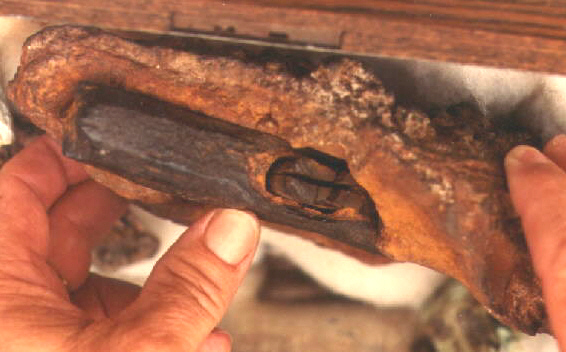 Fig. 3. Top view of hammer head Above photos (C) 1986, Glen J. Kuban Fig. 2. Hammer with broken section Fossilized Hammer 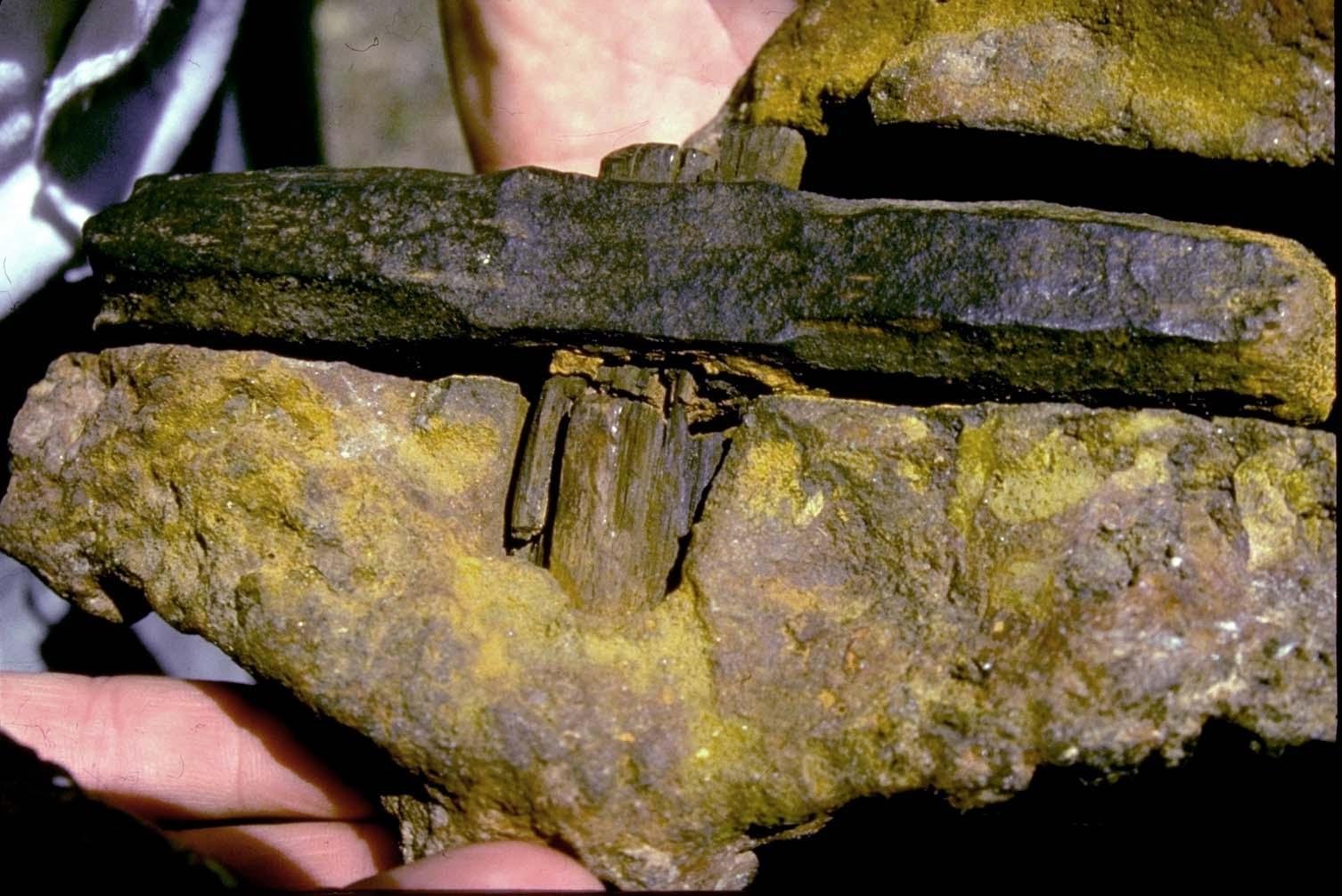 The wood
handle is partially coalifed with quartz and calcite crystalline
inclusions. Tests performed at Battelle Laboratory document the hammer's
unusual metallurgy, 96% iron, 2.6% chlorine and .74% sulfur (no
carbon). Density test indicate casting of exceptional quality. A unique
coating of FeO, which does not readily form under present atmospheric
conditions, appears to inhibit rusting. Found in a formation famous for
its dinosaurs, supposed to be 140 million years old (lower cretaceous).
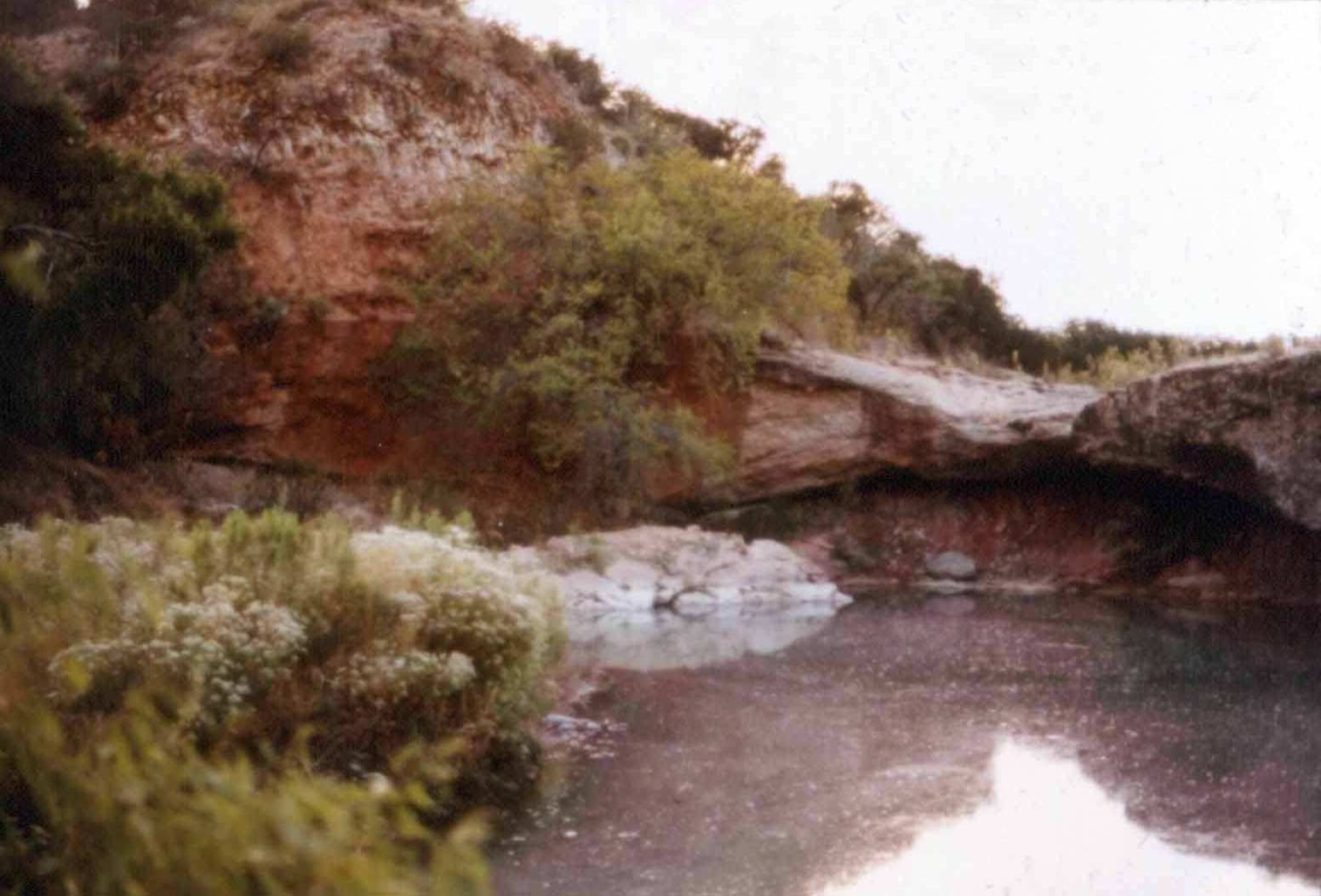 The location where the hammer was found. 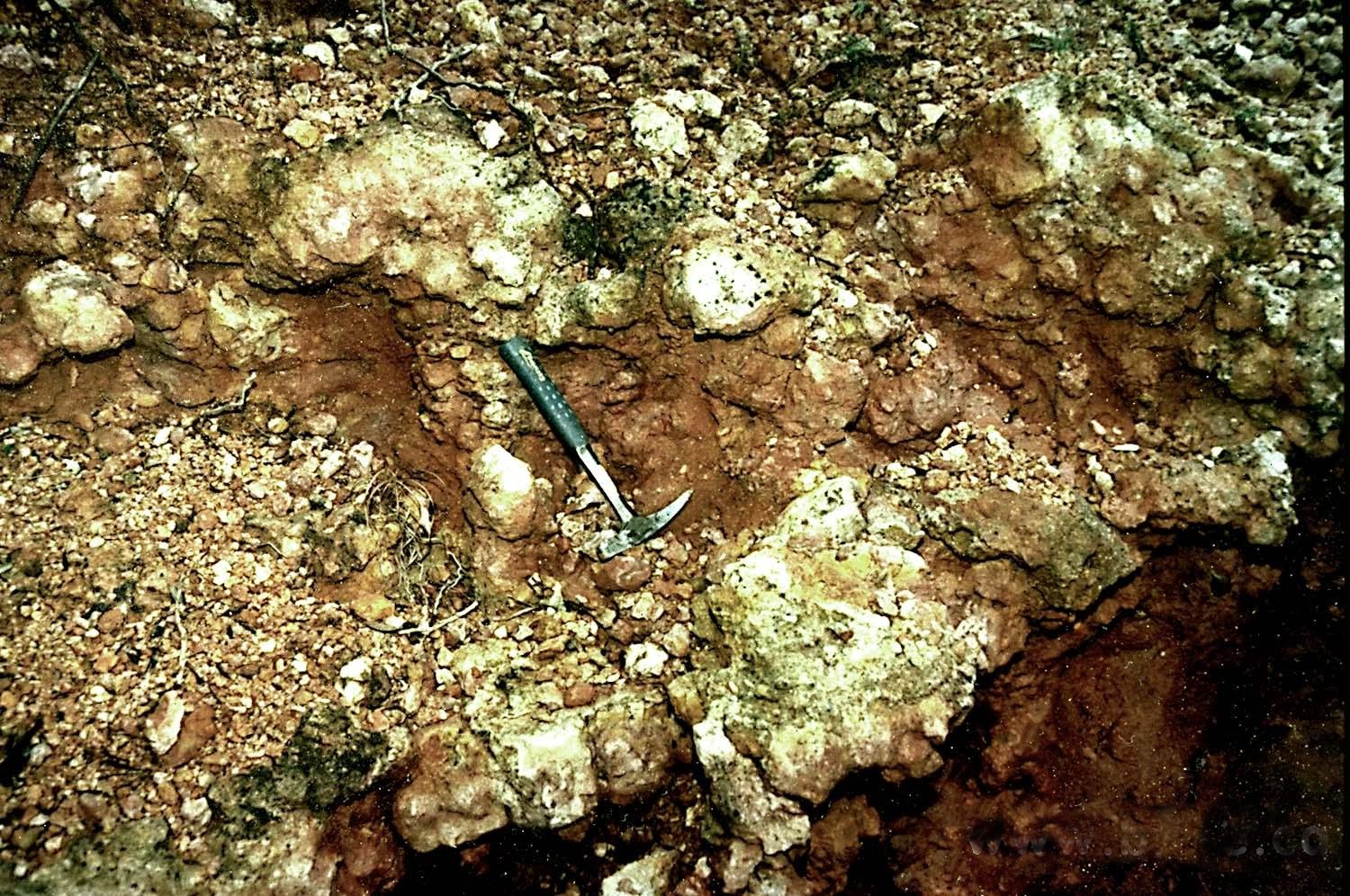 The enclosing rock contains Lower Cretaceous fossils. It is a concretionary sandstone
nodule from the nearby cliff which is made up of concretionary sandstone nodules. 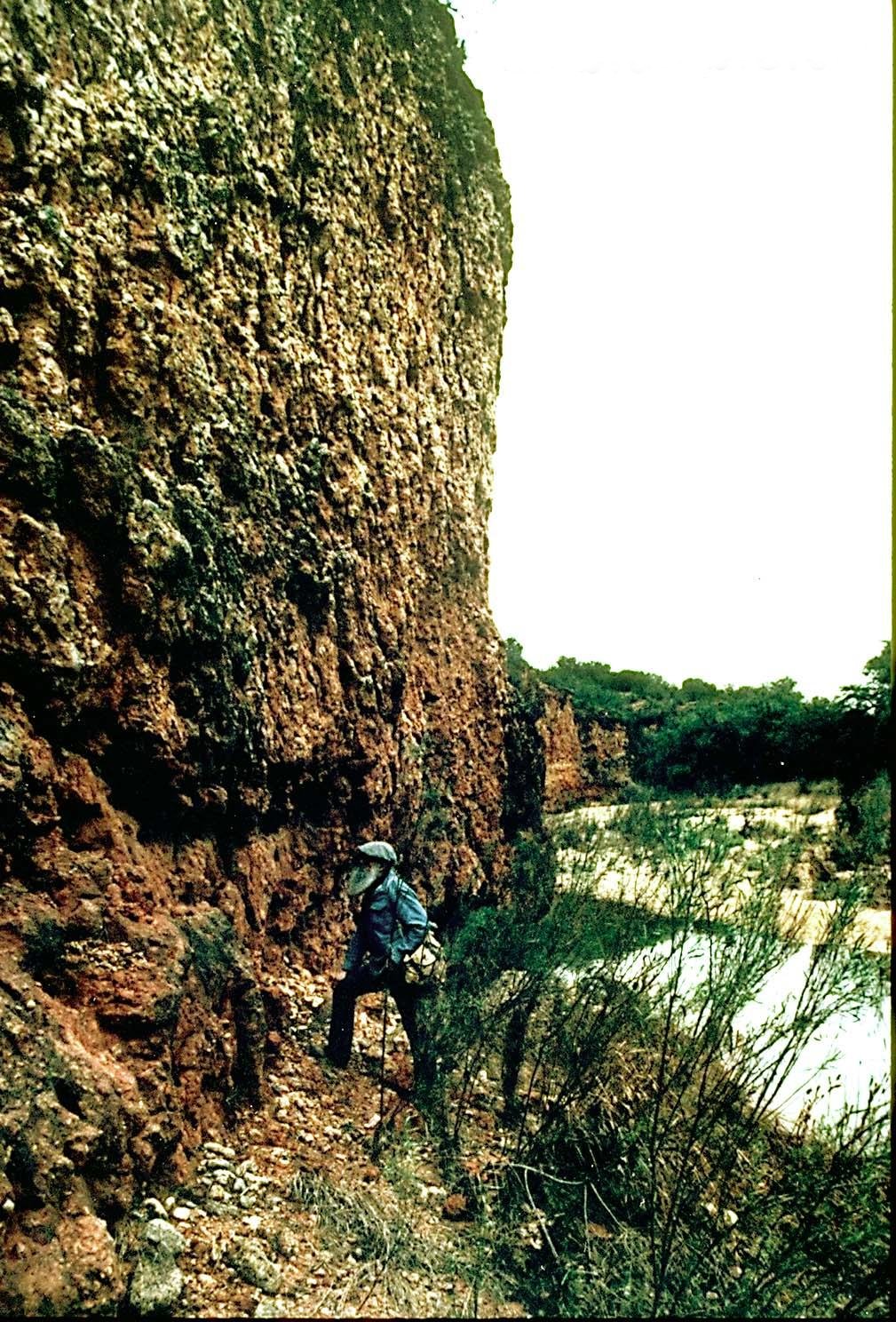 This cliff is
part of the Lower Cretaceous Edwards Plateau which evolutionists tell us
was formed 140 million years ago, when dinosaurs roamed the earth. Of
course, the coexistence of humans and dinosaurs would destroy
evolutionary theory, so maybe the hammer was made by dinosaurs. Do you
really think so?
SOURCE: Fossilized Hammer |
|
| FAIR USE NOTICE: This page contains copyrighted material the use of which has not been specifically authorized by the copyright owner. Pegasus Research Consortium distributes this material without profit to those who have expressed a prior interest in receiving the included information for research and educational purposes. We believe this constitutes a fair use of any such copyrighted material as provided for in 17 U.S.C § 107. If you wish to use copyrighted material from this site for purposes of your own that go beyond fair use, you must obtain permission from the copyright owner. | |
|
|
